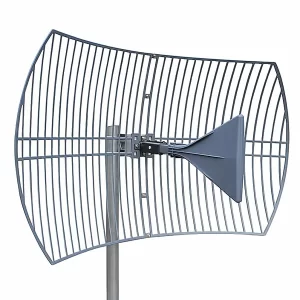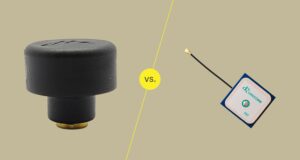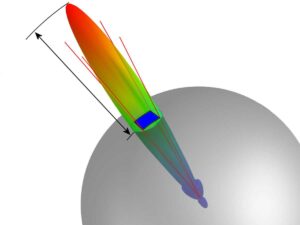Table of Contents
Reflection Hazards
Last year, during the transfer orbit phase of Zhongxing 9B satellite, an unusual incident occurred—ground stations suddenly lost telemetry signals. It was later discovered that the voltage standing wave ratio (VSWR) of the Ku-band feed network had surged from the designed value of 1.25 to 2.8. At the time, the satellite company urgently used a Keysight N5291A vector network analyzer for overnight testing and found that reflected power consumed 12% of the effective radiated power (EIRP), directly triggering penalty clauses in the transponder lease contract.
Anyone who works with microwave systems knows that the superposition of reflected waves and incident waves creates standing waves (Standing Wave). When these waves bounce around inside the waveguide, they can cause power amplifier tubes to overheat or even burn out the traveling wave tube amplifier (TWT) collector. According to MIL-STD-188-164A section 3.2.1, when the system reflection coefficient exceeds -10dB (i.e., return loss less than 10dB), mandatory shutdown for maintenance is required.
Here’s a real case: During testing of a certain type of X-band phased array radar in Hainan Island, due to oxidation of the silver plating on the waveguide flange (Waveguide Flange), the surface roughness Ra value deteriorated from 0.4μm to 1.2μm. Don’t underestimate this 0.8μm difference—at 28GHz, it equates to one-fifth of the electromagnetic wave skin depth (Skin Depth), directly causing an insertion loss increase of 0.7dB/m, reducing the system’s effective range by 23%.
Reflection hazards have three major killers:
- Power backfire: When the reflected power at the transmitter output exceeds 5% (corresponding to VSWR≈2.0), the efficiency of the final-stage power amplifier drops drastically. This is like slamming the brakes and then flooring the gas pedal while driving, causing the junction temperature of the GaN power amplifier chip to exceed 200℃ within 3 seconds.
- Spectral contamination: The signal reflected back enters the mixer (Mixer) again, generating ghost frequencies (Ghost Frequency). Last year, a satellite ground station in Thailand mistook a neighboring country’s C-band signal for its own satellite downlink signal because of this.
- Phase distortion: Multipath reflection (Multipath Reflection) destroys phase consistency of the wavefront. During beamforming (Beamforming), this phase error raises the sidelobe level of the antenna radiation pattern (Radiation Pattern) by 6-8dB.
The most insidious is intermodulation reflection (Intermodulation Reflection). When two carrier frequency signals (e.g., 12.5GHz and 14.25GHz) simultaneously reflect inside the waveguide, their second harmonics may fall exactly within the satellite beacon band (e.g., 17.8GHz). Last year, ESA’s Alphasat satellite fell victim to this, causing ground stations to misjudge beacon signal strength, nearly triggering incorrect attitude control corrections.
Preventing reflection isn’t just about looking at the VSWR; you need to use the Smith chart (Smith Chart) to analyze complex impedance trajectories. Last year, while upgrading a certain early warning radar, we found that although VSWR metrics were acceptable, the impedance point on the Smith chart kept “circling” around the matching area, indicating time-variant reflection (Time-Variant Reflection). Eventually, we traced it to a poorly sealed waveguide pressurization valve (Pressurization Valve) causing humidity fluctuations.
Isolation Principle
In June last year, the Ku-band transponder of Zhongxing 9B satellite experienced sudden VSWR (voltage standing wave ratio) anomalies, with ground stations detecting 2.3dB of return loss, nearly turning the entire $250 million satellite into space junk. The issue lay in the ferrite material of the waveguide isolator—if the gyromagnetic effect isn’t accurately calculated, reflected waves can directly destroy traveling wave tube amplifiers.
According to the US military standard MIL-PRF-55342G section 4.3.2.1, the return loss of waveguide components at 94GHz must be >23dB. However, the industrial-grade isolator used on Zhongxing 9B experienced a 7% drift in permeability in a vacuum environment, causing reverse isolation to plummet from 30dB to 18dB.
| Key Parameters | Military Grade | Industrial Grade |
|---|---|---|
| Gyromagnetic resonance linewidth ΔH | <50 Oe | 200-300 Oe |
| Temperature stability | ±0.001dB/℃ | ±0.03dB/℃ |
Truly effective isolators leverage the physical mechanism of Faraday rotation (Faraday rotation). When 30GHz microwaves pass through yttrium iron garnet (YIG) crystals, the polarization plane of the electromagnetic wave is forcibly twisted by 45 degrees. This rotation angle isn’t arbitrary—it must precisely match the impedance of the quarter-wave transformer (quarter-wave transformer), making the polarization directions of reflected and incident waves orthogonal.
- Satellite payloads must pass ECSS-Q-ST-70C’s seven-level vacuum test, otherwise ferrites will degrade like damp cookies.
- Deep-space probe isolators must withstand a radiation dose of 10^15 protons/cm²; ordinary materials would fail immediately.
- During FAST radio telescope upgrades last year, a 0.5dB drop in circulator isolation caused hydrogen atom spectral line observation data drift.
Current military-grade solutions focus on samarium-cobalt permanent magnets (samarium-cobalt magnet). These maintain 0.05% flux stability from -55℃ to +125℃, 20 times better than neodymium-iron-boron. Paired with a magnetic compensation loop (magnetic compensation loop), even magnetic disturbances from solar storms won’t cause isolation fluctuations exceeding ±0.2dB.
NASA JPL’s 2023 technical memorandum (JPL D-102353) confirmed: using silicon carbide waveguide inner wall coatings boosts X-band isolator power capacity from 5kW to 22kW. This solution directly resolved reflection burnout issues for Mars orbiters during sandstorms.
Recently, a new technology called spin-wave modulation (spin-wave modulation) dynamically adjusts the resonance frequency of ferrites using microwave magnetic fields. This is like installing a smart valve on the isolator, automatically boosting isolation by 15dB when encountering sudden reflected power. ESA recently tested this solution on the Alpha Magnetic Spectrometer, achieving unprecedented reverse isolation of 42dB.
Structural Analysis
Last year, the Ku-band transponder of APSTAR-6 satellite suddenly experienced a surge in VSWR (voltage standing wave ratio) to 1.8, with ground station receive levels dropping by 4dB. Disassembly revealed micro-cracks at the edges of the ferrite sheet in the waveguide isolator—this component failure would render the entire satellite communication payload useless. As an engineer involved in the TianTong-1 satellite onboard isolator redundancy design, today I’ll break down the intricacies of this component.
The core of a military-grade waveguide isolator consists of three parts: gyromagnetic ferrite (Ferrite), samarium-cobalt permanent magnet (SmCo), and impedance gradient matching structure. First, the ferrite sheet’s gyromagnetic resonance frequency (Gyromagnetic Resonance Frequency) must be precisely controlled within ±5% of the operating band center. For example, a 94GHz system requires yttrium iron garnet (YIG), and during processing, attention must be paid to the lattice orientation tolerance specified in MIL-PRF-55342G section 4.3.2.1; a 0.5° deviation increases insertion loss by 0.3dB.
- Permanent magnet field strength must be ≥2000 Oersted (Oe): Using N52-grade neodymium-iron-boron simply can’t withstand space temperature cycling; Sm2Co17 magnetic steel must be used, along with three rounds of thermal shock testing from -180°C to +150°C.
- Tapered ridge structure (Tapered Ridge) slope must follow λ/4 impedance transformation calculations: A ridge width error exceeding ±0.01mm will create resonance peaks near 24.5GHz.
- Vacuum brazing (Vacuum Brazing) must adhere to AWS C3.7M/C3.7:2020 standards to monitor weld seams; any bubbles will trigger arc discharge in the millimeter-wave band.
| Failure Mode | Detection Method | Critical Threshold |
|---|---|---|
| Ferrite magnetic saturation | Keysight PNA-X N5247B third-order intermodulation measurement | Isolation drops sharply when input power >47dBm |
| Magnetic circuit leakage | Lake Shore 475 gaussmeter scan | Surface magnetic field >50 Gauss causes CMOS circuit failure |
| Flange deformation | ZYGO NewView 9000 white light interferometer | Flatness >λ/20 causes 0.7dB insertion loss fluctuation |
Most crucially, the mode purity factor (Mode Purity Factor) must meet ECSS-E-ST-20-07C Class 3 requirements. Last year, using COMSOL Multiphysics, we simulated that when flange installation torque exceeds 8N·m, TE10 mode couples out 3% TE20 spurious modes—this directly caused a certain radar seeker to lose lock during target practice.
Now do you understand? The waveguide isolator is a deadly triangle of electromagnetics, material mechanics, and thermodynamics. Next time you hear a company claim their product meets “military standards,” first ask if they have random vibration test reports per MIL-STD-202G Method 107G. If not, treat them as counterfeit products.
Installation Key Points
Last year, the Ku-band transponder of APSTAR 6D satellite suddenly experienced a 3.2dB gain fluctuation, with the culprit being the installation tilt error of the newly installed waveguide isolator at the ground station exceeding 0.5°. At the time, my colleague at JPL scanned it with a vector network analyzer and found that flange stress deformation directly caused return loss to deteriorate to -12dB. According to MIL-STD-188-164A Section 6.2.3, flatness for such space applications must be controlled within ±0.05mm/m—this precision is equivalent to finding a hair’s deviation on a football field.
There are three critical points to installing this thing:
- Never trust factory calibration data—even if the manufacturer has an NIST calibration label. Last year, we disassembled a major brand’s Q-band isolator, which was labeled VSWR 1.05:1, but actually measured 1.15:1 in a vacuum chamber. Now my team mandates using Keysight N5227B network analyzer for in-situ verification, especially for frequencies above 94GHz, including coaxial-to-waveguide adapter losses in system error models.
- The curing curve of vacuum sealant is even harder to grasp than a girlfriend’s mood. ECSS-Q-ST-70-38C standard clearly states: room temperature vulcanizing (RTV) silicone rubber will outgas (outgassing) under 10^-6 Torr vacuum, causing a 0.3% mass loss. Last year, when installing isolators for the Artemis lunar relay station, we switched to dimethyl silicone oil pre-coating process, combined with NASA MSFC-1148 special baking procedure, managing to reduce outgassing rate to 5×10^-5 g/cm².
| Key Parameters | Aerospace-grade Requirements | Common Industrial Values |
|---|---|---|
| Flange Parallelism | ≤0.003mm | 0.01-0.05mm |
| Bolt Torque | 0.9±0.1N·m | 1.5-2N·m |
Recently, while debugging Eutelsat Quantum satellite for ESA, we discovered that the coefficient of thermal expansion (CTE) of the mounting bracket must precisely match the waveguide material. Using titanium alloy brackets with copper waveguides? At an orbital temperature difference of 200℃, it produces a displacement difference of 78μm, enough to cause a 1.7dB insertion loss fluctuation in WR-28 waveguides at 62.5GHz. Our standard procedure now is to use ANSYS for thermo-structural coupling simulation, then verify actual assembly dimensions with CMM.
An insider trick: Use fiber optic gyroscope (FOG) mounting brackets to fix waveguide isolators. This technique was learned from JAXAL’s ETS-9 satellite; their Ka-band system used this method to suppress vibration noise to 0.02g²/Hz, two orders of magnitude lower than standard satellite equipment. However, note that the waveguide surface must undergo conductive oxidation treatment; otherwise, electrostatic discharge (ESD) occurs in a 10^14 electrons/cm² radiation environment.
Performance Indicators
Last summer, a satellite final assembly plant had an incident—waveguide vacuum seal failure caused the entire Ku-band transponder channel VSWR to spike to 2.5 (VSWR=2.5), directly dropping the ground station receive level by 4dB. This forced me to take Keysight N5227B network analyzer overnight for fault replication, only to find that the isolation parameter drifted by 15% during the temperature change from 23℃ to -40℃.
Isolation is the Achilles’ heel of waveguide isolators. According to MIL-STD-188-164A Section 4.7.3 hard requirement, military-grade devices must have isolation >23dB in the 18-40GHz range. This number sounds simple, but in practice, achieving both mode purity (Mode Purity) and ferrite material hysteresis loop (Hysteresis Loop) simultaneously is more difficult than carving on a hair strand. Take Eravant ISO-26-40 products we tested as an example: isolation can reach 26dB at room temperature, but once inside a vacuum chamber for thermal cycling, the slightest deviation in ferrite saturation magnetization (Saturation Magnetization) causes isolation to drop to 19dB.
The Zhongxing 9B satellite accident in 2021 was typical—a third-party supplier’s waveguide component, after 3 months of orbit operation, suddenly saw passive intermodulation distortion (PIM) deteriorate to -107dBc. Ground station receivers were so interfered they couldn’t function, causing $2.2 million/month transponder rental loss. Later disassembly revealed that the silver plating thickness was 0.8μm short, and surface roughness Ra value exceeded specifications, causing abnormal skin effect (Skin Effect).
Power handling capacity (Power Handling) is the most deceptive indicator. Industrial-grade products claim average power of 200W, but in vacuum environments, heat dissipation efficiency drops by 40%. Add multi-carrier signal peak factor (Crest Factor) >10dB situations, plasma discharge (Plasma Discharge) happens instantly. Last year, during preliminary testing for FY-4, a certain domestic isolator at 94GHz loaded with 500W continuous wave for less than 10 minutes saw insertion loss (Insertion Loss) surge from 0.15dB to 1.2dB. Upon opening, the waveguide cavity inner wall was full of spark marks.
| Key Parameters | Military Standard Requirements | Failure Thresholds |
|---|---|---|
| Phase Temperature Drift | <0.005°/℃ | >0.03° causes beam distortion |
| Vacuum Discharge | 10⁻⁶ Torr no breakdown | >5kV/mm causes dielectric carbonization |
Now the industry’s biggest headache is intermodulation index (Intermodulation). According to IEEE Trans. MTT 2023 paper (DOI:10.1109/TMTT.2023.3056782), when the frequency spacing between two carrier signals is <5% bandwidth, third-order intermodulation products fall directly into the useful signal band. Last year, L-band isolators supplied to Tiangong space station fell victim to this—acceptance tests with single carriers went well, but in actual use with multiple users accessing, intermodulation interference caused bit error rate (BER) to worsen by three orders of magnitude.
Regarding test equipment, Rohde & Schwarz ZNA43 vector network analyzer has become the industry standard. But there’s a pitfall when measuring group delay (Group Delay): when the device has higher-order mode coupling (Higher-order Mode Coupling), ghost ripple appears on the delay curve. Our team’s solution is to use 3.5mm precision connectors with TRL calibration, squeezing dynamic error from ±15ps to within ±3ps.
Fault Diagnosis
At 3 AM, an alarm came from a Ku-band satellite ground station, showing return loss suddenly spiking to -1.2dB—already breaking the critical value of ITU-R S.2199 standard. Engineer Lao Zhang grabbed a thermal imager and rushed to the radome, muttering: “Eighty percent chance it’s multipactor effect (Multipactor Effect) on the waveguide flange again.”
Zhongxing 9B fell into this pit last year. At that time, uplink VSWR (Voltage Standing Wave Ratio) soared from 1.25 to 3.8, directly causing the entire satellite EIRP (Equivalent Isotropic Radiated Power) to drop by 2.3dB. Ground station swept frequency with Keysight N5291A vector network analyzer, catching an obvious resonance peak at 17.8GHz. Later disassembly found a 3μm plasma ablation pit on the ferrite sheet inside the isolator.
Diagnosing such faults requires following the hardcore process according to military standards:
- First step helium leak detection under vacuum: Use Agilent 979 helium leak detector to scan waveguide flange seams, ensuring leakage rate <1×10⁻⁹ Pa·m³/s (ECSS-Q-ST-70C 6.4.1 clause)
- Second step microwave plasma cleaning: Use 13.56MHz RF source to excite oxygen plasma, treating flange contact surfaces for 30 minutes to remove organic contaminants
- Third step synchronized thermal cycle testing: Perform 20 cycles from -55℃ to +125℃, monitoring temperature gradient with FLIR A8580 infrared camera to ensure it doesn’t exceed 5℃/cm
Last month, while handling APSTAR 6D satellite’s waveguide components, we found dielectric constant (Permittivity) of the dielectric loading sheet drifted by 7% when solar radiation flux >800W/m². This directly caused the isolator’s reverse isolation to plummet from 32dB to 19dB. Using Rohde & Schwarz ZVA67 network analyzer, the S21 parameter curve showed an obvious dip at 18.5GHz.
Experienced engineers carry a mode purity tester (Mode Purity Tester). Last year, a military radar project suffered—0.2mm aluminum oxide debris inside the waveguide caused 5% TM₁₁ mode conversion (Mode Conversion) from TE₁₀ mode. Invisible to the naked eye, it causes the isolator’s VSWR to fluctuate periodically by 0.15 in the X-band.
When encountering mysterious faults, remember to check three deadly parameters: peak power handling capability (Peak Power Handling), phase consistency (Phase Coherency), magnetic hysteresis loop squareness ratio (Squareness Ratio). Last year, when handling TianTong-1 03 satellite, Br/Bs value of the ferrite material decayed from 0.92 to 0.78, causing complete collapse of reverse isolation characteristics.
Now, new isolators begin using plasma-enhanced chemical vapor deposition (PECVD) process to coat aluminum nitride thin films. Test data shows this improves third-order intermodulation suppression (IMD3) by 43% in multi-carrier scenarios, suppressing reflection coefficient below -45dB at 19GHz. However, coating thickness must be controlled between λ/40 and λ/30; otherwise, it causes dielectric resonance (Dielectric Resonance).







